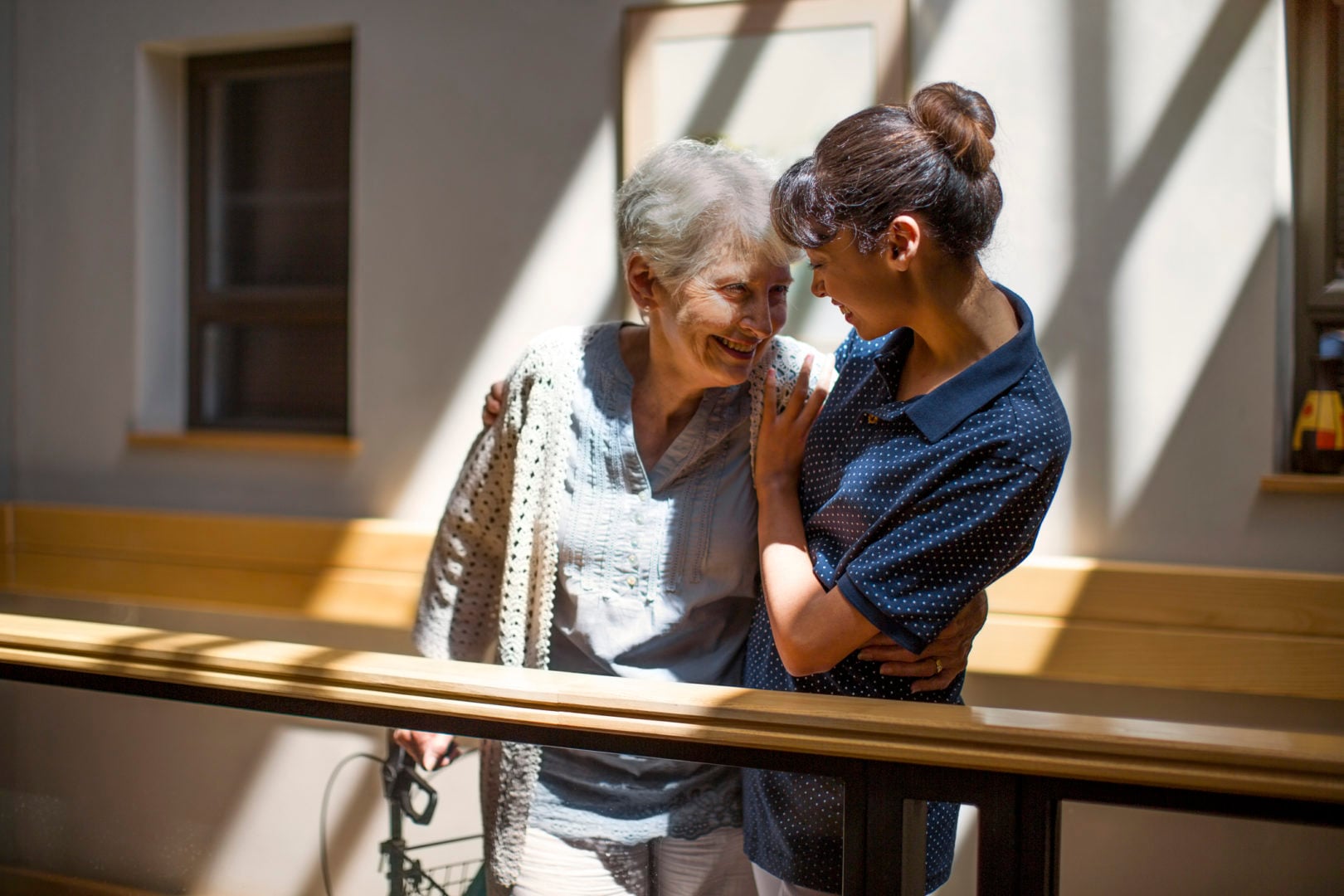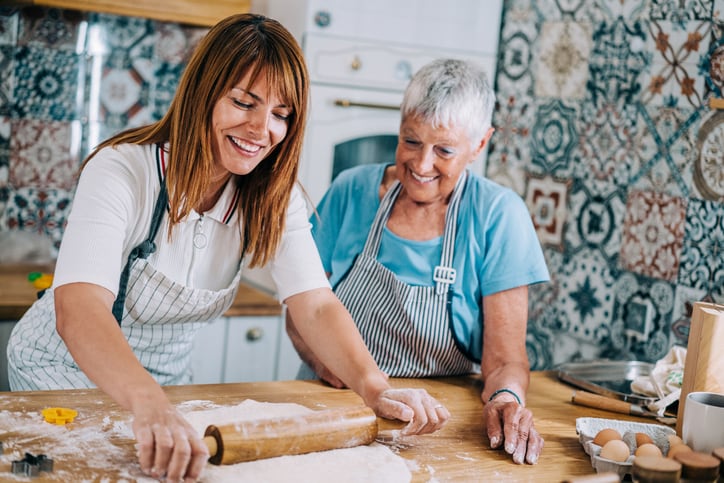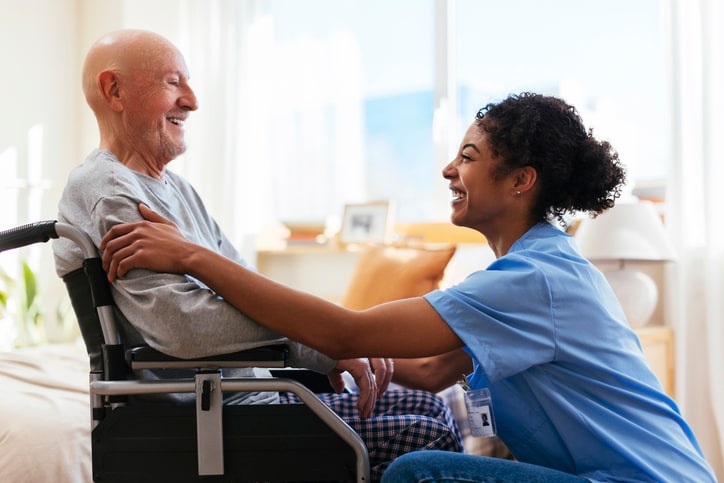As a person ages, falling — even tripping — becomes a lot more dangerous. According to the latest research from Centers for Disease Control (CDC), about one in four adults (28%) age 65 and older, report falling each year. This results in about 36 million falls each year. Falls can lead to serious injuries, such as hip fractures and head traumas, causing more drastic senior care needs. In fact, among this age group, falls are the leading cause of injury-related death.
Fall prevention is most necessary when an older adult is using bathrooms or stairs — the two biggest culprits of spills — according to Helen Lach, associate professor of gerentological nursing at St. Louis University School of Nursing. But that doesn’t rule out general household dangers, neurological changes or balance deficits.
What’s more, if an older adult has already fallen, they are at risk for another fall, says Alice Bell, a physical therapist specializing in Geriatrics and an American Physical Therapist Association spokesperson. Still, many seniors don’t tell their caregivers if they fell because they’re afraid that will mean they have to leave their home or go to an assisted-living facility. “Older adults need to know that if they fall — or even if they’re afraid of falling — they need to ask for help before the situation becomes a crisis,” says Bell.
Lifestyle and home modifications can then be made safely and correctly. “Have a heart-to-heart with your senior when everyone is healthy and in a good mood and you both feel comfortable addressing rising concerns,” suggests Bell.
If your older loved one’s goal is to age in place, here are 12 must-know fall prevention tips.
1. Get a check-up
Fortunately, falls are preventable. If your loved one has recently become a bit unsteady, make sure their doctor gives them a full physical evaluation to rule out any medical issues. For instance, low blood pressure can cause falls, as can diabetes, which can decrease sensation in lower extremities.
2. Keep track of medication
Go over all prescription and over-the-counter medication. Some drugs’ side effects and interactions can cause dizziness, weakness and drowsiness. And not taking medications properly or as prescribed can also be hazardous. If you’re worried your loved one needs help taking proper dosages (or remembering to), ask a neighbor to help, set up a FaceTime chat or a phone call to remind them or hire a senior caregiver.
3. Monitor alcohol intake
Be sure your loved one’s doctor discusses alcohol consumption and how that might interact with current medications.
And bear in mind that over-imbibing on alcoholic beverages can obviously throw anyone off balance. If you think drinking too much is part of the reason your loved one is losing balance, be sure to discuss your concerns with them and their doctor.
4. Start an exercise and stretch routine
“Less than 40% of all older Americans exercise,” says Lach. And without exercise, you lose your muscle tone and strength — especially in your legs — which is imperative in maintaining balance.
Current CDC guidelines for people over 65 are 150 minutes of moderately vigorous exercise per week. (Moderately vigorous is defined as exercise that causes you to break a sweat, but you are still be able to have a conversation.) They also advise older adults to include twice weekly strength training sessions. Bell recommends walking at a fast enough pace to break a sweat, bicycling or dancing (think taking a streaming cardio dance class).
The CDC highly recommends Tai Chi as a great aerobic activity as well as a way to increase balance.
If your older loved one has led a mostly sedentary lifestyle, suffers from a chronic illness or has recently suffered a fall, ask their doctor for a physical therapist referral. In addition to teaching them how to exercise correctly, a physical therapist can also analyze their movement to find out if they’re walking properly or able to get out of a chair without straining.
5. Get an eye exam
See that your loved one has their eyes checked by an ophthalmologist at least once a year and update their eyeglasses. In addition to deteriorating vision, which can cause trips and stumbles, cataracts can inhibit vision which can lead to falls.
6. Get a cane or walker fitting
It’s tempting to buy a cane or walker from a home health aide store or even your local pharmacy, but a too tall or too short walker or cane can often cause more harm than good. According to Bell, many seniors actually fall because they trip on their canes.
Check with a physical therapist to determine if a cane or walker is necessary. If it is, work with the therapist to get properly fitted and learn how to use it correctly.
7. Focus on calcium and vitamin D
Make sure that your loved one is getting adequate calcium and vitamin D in their diet. A study published in the medical journal Osteoporosis International found that vitamin D supplementation can help improve balance and strength. Women aged 65-97 reduced their rate of falls by 60% when given vitamin D in addition to calcium over a three month period.
In addition to adding calcium-rich dairy and dark-green, leafy vegetables to her diet, ask your family doctor to screen your senior for vitamin D deficiency and osteoporosis. Ask for supplementation guidelines.
8. Recognize hazards
Take a look around your loved one’s home and see what might give them a problem. A few simple adaptations can make your parent’s home much safer and help them age in place even longer.
Check for:
- Proper lighting: In addition to having enough lamps, be sure to install higher watt light bulbs. Also, make sure there are adequate nightlights.
- Clutter: Stacks of newspapers, magazines, and other objects can be hazardous if they are near walkways. Eliminate clutter by using baskets and bins to organize items.
- Cords: Lamp and appliance cords can be trip hazards. Move items to minimize cords stretching across rooms and walkways.
- Throw rugs: Eliminate throw rugs, which can easily trip a senior up, and opt for bare floors or wall-to-wall carpeting.
Consider rearranging the house so that your senior can live on one floor (moving the bedroom downstairs, for example). Since stairs are a top place for people to fall, it’s better to eliminate or avoid them before a mobility problem arises.
Help your loved one avoid reaching for items by moving microwaves and other appliances to waist-level. Also, implement lazy susans or baskets to prevent reaching into high or deep kitchen cabinets. And keep everyday items in arm-level drawers to prevent bending.
9. Update the bathroom
If there’s a full bath on the lower level, or you’re considering adding one, make sure it has anti-slip tile, a shower stall with no tub or lip and sturdy hand bars around the shower and toilet. Your doctor can also order an occupational therapist to do a home safety evaluation, which could be covered by Medicare.
10. Come up with new house rules
Simple rules, such as not bathing alone and getting help around the house, can help prevent future falls. Lach suggests having a frank conversation with your dad and tell him you’re worried about him. Ask him to call you or make a list of the household chores he needs done, like changing a lightbulb. If you don’t have the time to help as much as is needed, consider hiring a senior caregiver who can help.
11. Design an emergency plan
Lach suggests keeping a log for at-home caregivers, detailing what is prescribed and discussed with doctors. Share this senior emergency checklist with family members and caregivers.
You might also consider getting your loved one a pre-paid cell phone with your number and 911 programmed into it, if they don’t already have one. Or hook them up with a medical alert system that includes a wearable device that can easily put them in touch with an emergency dispatcher.



